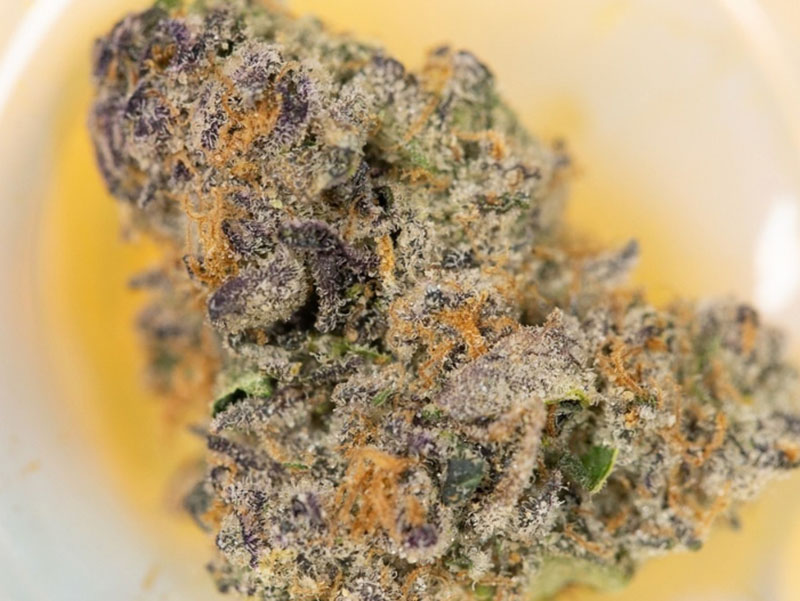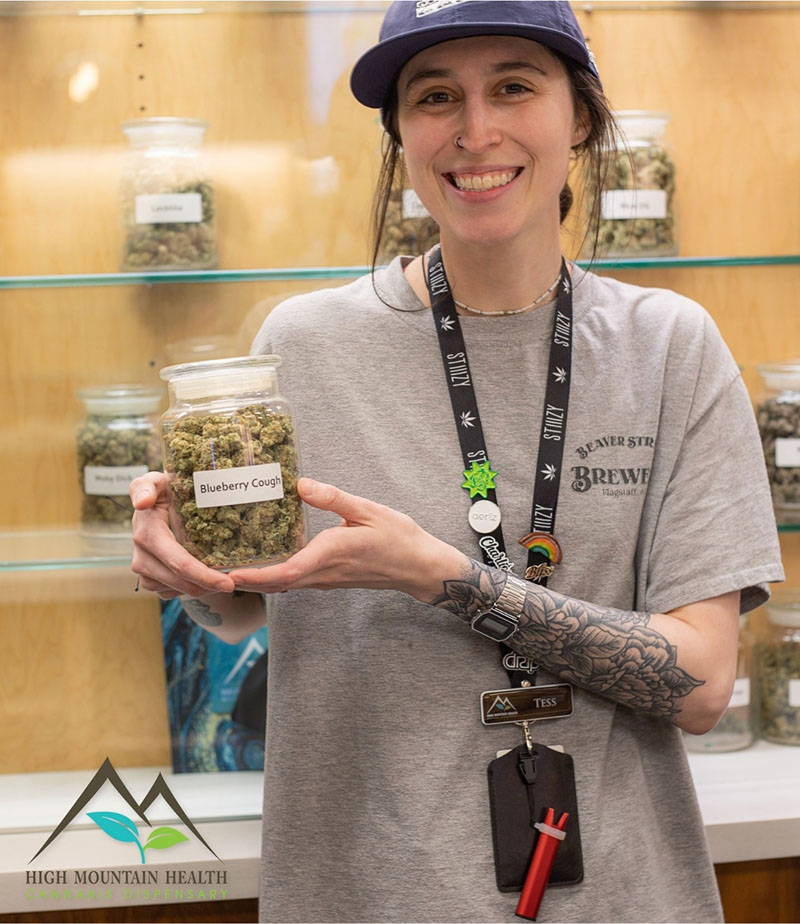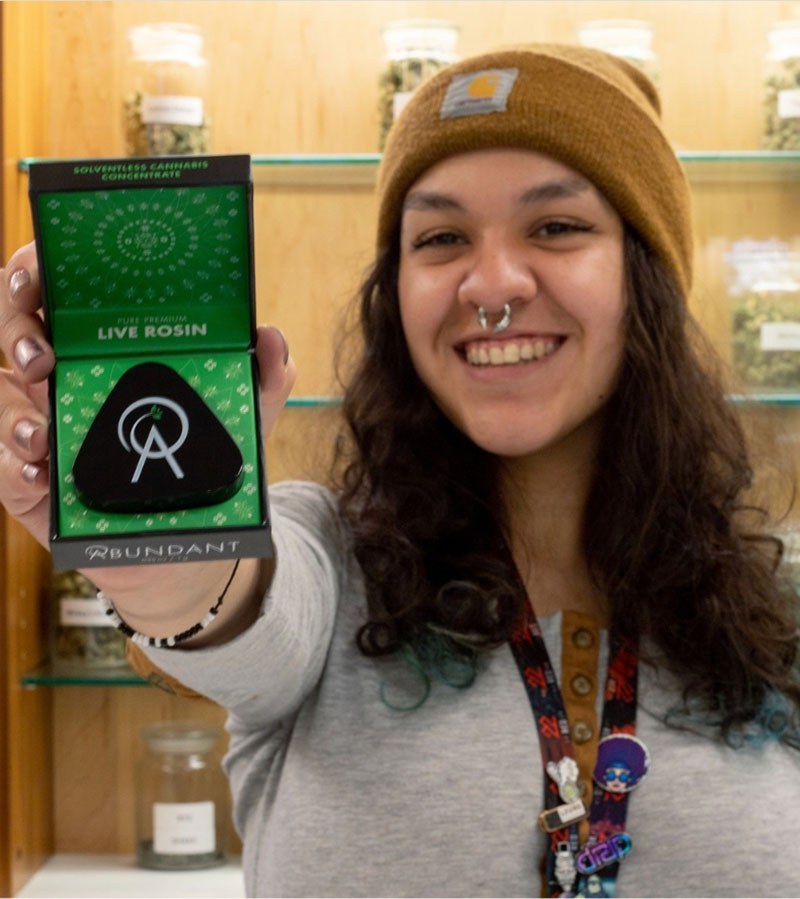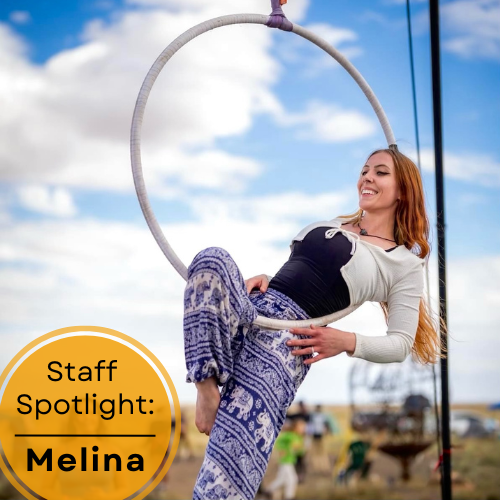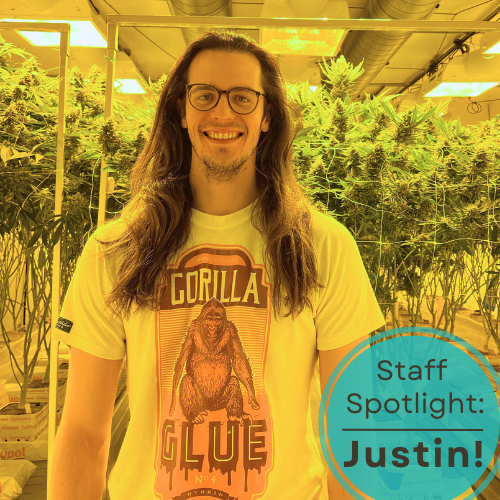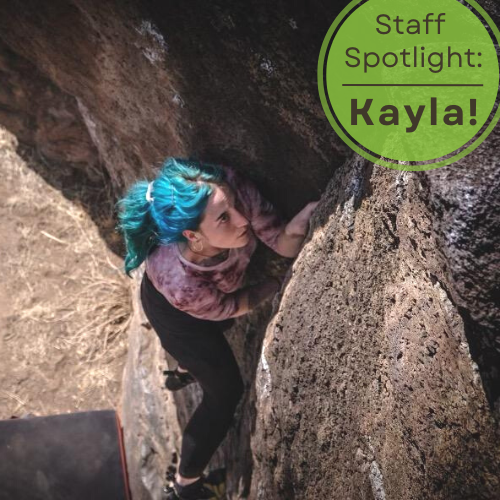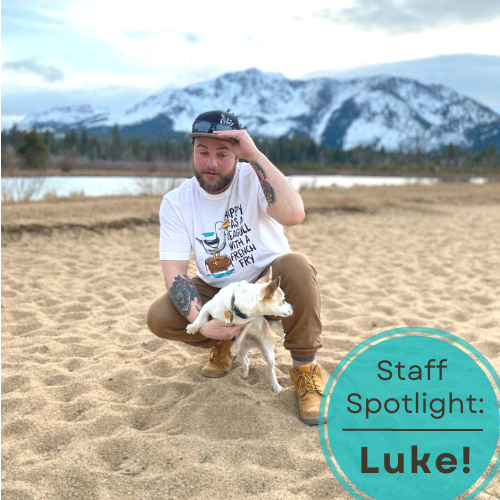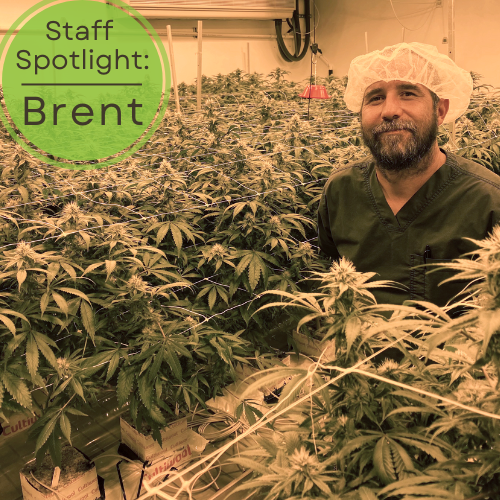We know our ABCs, but do you know the ABCs of cannabis? Here's some essential cannabis vocabulary to learn (and impress your friends with).
A is for Anandamide
Anandamide is the first endogenous cannabinoid — cannabinoids that are produced organically in our bodies — discovered. It interacts with our brain's CB1 and CB2 receptors to regulate emotion, and to help with anxiety and depression; this makes its name particularly appropriate — the Sanskrit word ananda translates to bliss. It is currently being researched for its anti-physchotic and anti-proliferative (it has been shown to inhibit cancer cell growth) qualities.
B is for Bong
Also known as "water pipes," bongs are a particularly effective method for ingesting cannabis. Bongs have been used for smoking in Southeast Asia and Africa for centuries. They are often made from glass or plastic and filled with water. Then cannabis (or other smokeable herbs) are placed in a bowl attached to a downstem. Bongs are preferred over other methods of smoking because they create a "smoother" smoke because it is filtered through water. The person smoking inhales and creates bubbles in the water, which then release the smoke into the person's lungs.
C is for Cannabidiol
Cannabidiol (also known as CBD) is a organic chemical compound found in the cannabis plant. It has incredible medicinal uses including being anti-emetic, anti-inflammatory, anti-proliferative and anti-physchotic. CBD may be administered through smoking, a tincture, an edible, etc. Learn more here!
D is for DEA
The Drug Enforcement Agency is basically the regulatory department of our federal government. They have the power to schedule substances, such as cannabis, which is currently seen by the DEA as a Schedule 1 substance. This means that, federally, cannabis is illegal, has no medicinal use and a high risk for addiction. That's pretty illogical, especially since more than half of the United States have legalized cannabis either medicinally or recreationally.
E is for Endocannabinoid System
Did you know our bodies are built to interact with cannabinoids? It's true, the complex endocannabinoid system of receptors are found in our brain, our organs, our tissues an cells. This is partly why cannabis is such an effective medicine - the ways for it to work with our bodies is already there. According to an article from NORML: "Researchers have identified two cannabinoid receptors: CB1, predominantly present in the nervous system, connective tissues, gonads, glands, and organs; and CB2, predominantly found in the immune system and its associated structures."
F is for Fentanyl
Fentanyl is a highly addictive painkiller. Little do most know, it is produced in Chandler, Ariz., by Insys Therapeautics. Insys actually donated the most money of any company against Prop 205 (cannabis legalization) in Arizona in 2016.
G is for Ganja
What we call cannabis someone else may call ganja. The beloved plant has a long and storied history, and has gone by a number of names. Today, many medical facilities prefer to call it by its scientific name - but we wont forget its complicated history and the many names it has gone by. This is NOT a Rastafarian word, as many believe. It actually is Sanskrit, and originally refers to a very concentrated version of cannabis traditionally made in India. Check out other slang terms for our favorite herb here.
H is for Health Oil
Health Oil is a concentrated cannabis product. It's a a thick, tar-like substance that includes terpenes, cannabinoids, chlorophyll and other aspects of the plant. This medicine is particularly sought after because it uses all parts of the cannabis plant instead of focusing in on one cannabinoid. When all these aspects work together, it induces the Entourage Effect, elevating the medicine to become even more potent and powerful.
I is for Indica
Indica is a classification of the cannabis sativa plant. Indicas are typically shorter with wider leaves. When smoked, they have a more sedating effect and are particularly helpful in treating insomnia, stress and chronic pain. Common indicas include Grand Daddy Purple, Tyson OG and Grape Ape -- just to name a few.
J is for Jazz
Did you know the jazz musician Louis Armstrong — known for his distinctive voice and stylistic trumpet playing — regularly smoked cannabis? In an interview with biographer Max Jones, he commented on his name for cannabis — 'the gage': "That was our cute little nickname for marijuana…We always looked at pot as a sort of medicine, a cheap drunk and with much better thoughts than one that’s full of liquor.” He was known to smoke before performances and recordings. And Armstrong isn't the only creative known to light up — we know today that many strains elicit an energetic creativity.
K is for KAYA
KAYA is a HMH's concentrate brand. KAYA has developed three vape pens, the Mys-Stix, the Rip-Stix and the Sol-Stix. They also create clear dabbing oil that is extremely potent -- perfect for those with a higher tolerance. Their focus is on accessibility, personalization, and high quality medicine. You can pick up all KAYA products at HMH, and pick up the Mys-stix at a variety of dispensaries across Arizona. #findmykaya
L is for Limonene
Among the most common terpenes (chemical compounds that give plants their smell and flavor) is limonene. Limonene is often found in citrus, but also lends its bright, uplifting aroma to cannabis strains like Green Crack. This terp has been shown to have benefits for those suffering from depression and fatigue. Read more about Limonene here.
M is for Medicating
A more professional term for using cannabis. Used in this or similar contexts: "Yeah, I just picked up an 1/4 of Tyson OG ... Can't wait to go home and start medicating."
N is for Nausea
Many patients have turned to cannabis to relieve nausea. Nausea is a common side effect of certain illnesses and chemotherapy. Some patients have nausea so severe they cannot eat. Luckily, cannabis has anti-nausea and anti-emetic qualities - particularly when utilizing strains with a high THC. The quickest way to treat this symptom is through inhalation; if you have a queasy stomach, invest in a good vaporizer. Interestingly, researchers are discovering strains with more of the terpene myrcene may also have anti-emetic benefits.
O is for Olfactory
Olfactory refers to anything related to the sense of smell. You've might of heard the saying "the nose knows" -- and this is true! Your body will let you know what strain you need based on the scent of certain flowers. Without realizing it, you might be picking up on calming linalool and myrcene, or the energy of limonene. So take a deep breath and inhale all those yummy scents cannabis gives off.
P is for PMS
Cramps, irritability, appetite loss, mood swings, etc., are all symptoms of premenstrual syndrome, which affects countless women every day. Cannabis has historically been a method for managing these symptoms. Topicals and transdermal patches have proven to be helpful for inflammation as well. Here's a list of the best strains to use for PMS.
Q is for Quarter
This is a measurement of cannabis - roughly 7 grams.
R is for Rosin
Rosin is a form of concentrated cannabis made from applying heat and pressure directly to the cannabis. Part of the reason rosin has become so popular is because it is solventless -- it is pretty simple to make. Furthermore, the process maintains most of the cannabinoids and terpenes found in the plant, creating a product that is medicinal and has a strong smell and flavor.
S is for Seizures
One of the most widespread qualifying conditions for medical marijuana are seizures. From Charlotte Figi and countless other children who have been treated with CBD to treat rare forms of epilepsy, to those with irreparable brain injuries, cannabis has been used as a natural remedy to improve quality of life. These medicinal qualities have garnered the attention of researchers across the globe.
T is for Tincture
One of the easiest and most discreet methods of ingesting cannabis is through a tincture. There are a range of tinctures with varying ratios of THC and CBD - or even just CBD - for your medicating needs and desires. They are often ingested by dropping the liquid under the tongue (sublingually) -- this results in almost immediate effects -- or by rubbing it into the skin (topically). Tinctures may be made by infusing the cannabis; some of the most popular infusion agents include ethanol, grape seed oil and coconut oil.
U is for "Uhhhhhhhh"
This expression is commonly heard after ingesting a little too much cannabis, referring to an unpleasant sensation or discomfort. Did you know high CBD strains or CBD tinctures can level out a too-intense high? The best advice: don't panic -- no one has ever died from cannabis.
V is for Vaping
More patients are realizing the benefits of vaporizing, as opposed to smoking. When you smoke, you're burning the flower and creating carbon, which is a known carcinogen. Vaping might offer a healthier alternative, while still delivering potent medicine.
W is for Weed-y
This is a descriptor for edibles that have that familiar, grassy taste, reminiscent of pot brownies from back in the day. We are so lucky edibles have come such a long way with flavor and potency.
X is for Xenophobia
The word "marijuana" has decidedly xenophobic origins. In an article from Al Jazeera, Alfonso Serrano writes: "In an effort to marginalize the new migrant population, the first anti-cannabis laws were targeted at the term “marijuana,” says Amanda Reiman, a policy manager at the Drug Policy Alliance. Scholars say it’s no coincidence that the first U.S. cities to outlaw pot were in border states. It is widely believed that El Paso, Texas, was the first U.S. city to ban cannabis, when it approved a measure in 1914 prohibiting the sale or possession of the drug."
Y is for Youth
Cannabis has an unshakeable stereotype of being only for young people. The times have changed, however, and everyone from moms to grandfathers are utilizing cannabis as a way to manage the aches and pains of aging. It would be ignorant (and flat out wrong) to assume that the only people using cannabis are in their early 20s.
Z is for Zip
Zip is slang for an ounce of cannabis. Used in this context: "I'd love a zip of the Caramel Ice... I don't want to run out anytime soon!"
--Words by Taylor Haynes


